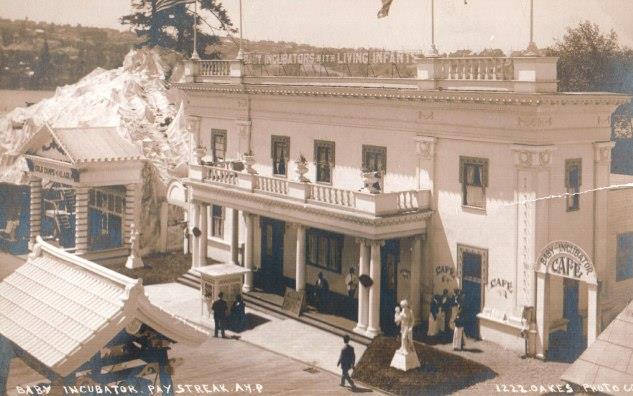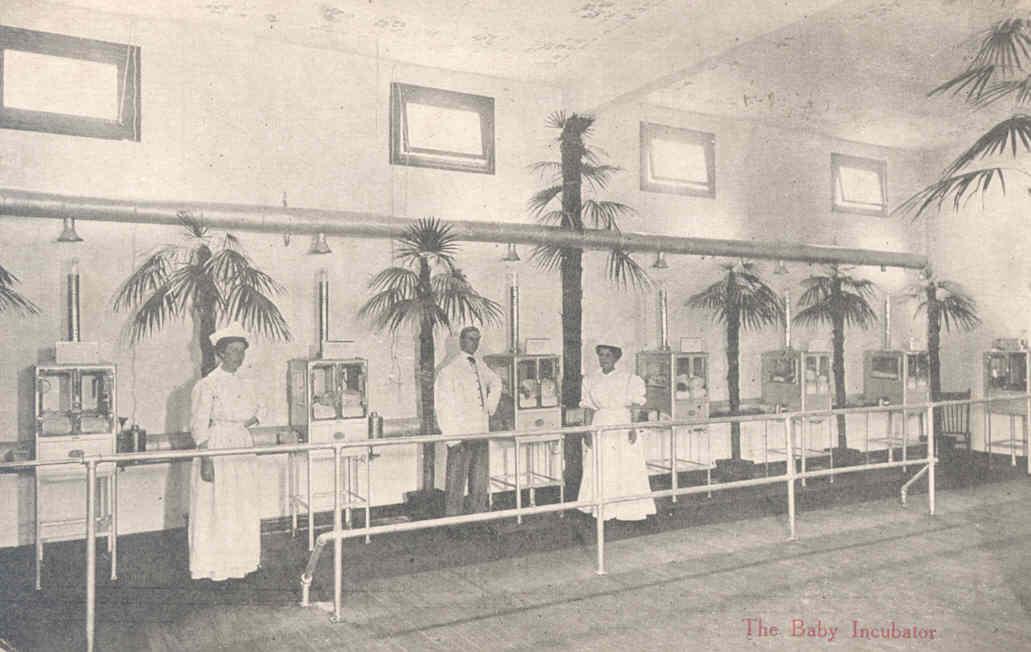Alaska-Yukon-Pacific Exposition - Images of the Fair
Baby Incubators
In 1909, premature infant incubation was not a part of regular medical treatment in the United States, although it had been recognized in Europe for over a decade. Part of the reason for this was that mortality of mothers and full-term newborns was a greater obstetric problem at the time. Exhibition of incubating babies began at Berlin's 1896 exposition in in an effort to help publicize the need for more research, and to the surprise of all was a very popular and profitable attraction. Although some controversy emerged over public treatment of infants in entertainment venues, they became a staple of International Expositions and were introduced into American World's Fairs in the 1898 Omaha fair. A permanent (seasonal) incubation venue at Coney Island was very successful from its inception in 1904, surviving skepticism, investigation, and,sadly, tragic fire. The incubator's inventor and tireless promoter of public-hospital incubation was credited with forty-six World's Fair displays by the time incubation finally became part of American medical practice in the late 1930's.

Oakes Photo Co.
Exterior of Baby Incubator display. Gold Camps of Alaska are to the left. Baby Incubation may represent the height of self-funded mission. All babies were accepted regardless of background and parents were never charged for treatment of the infants. The babies received constant professional attention, and some aspects that might surprise us today simply reflect the culture of the times. The restaurant on the right reflects the need of the venue to pay its own way, along with the general acceptance that the overall concept had achieved.
Photo by Official Photographer, pub. by Robert Reid as printed postcard.
Interior of AYPE Baby Incubators.










